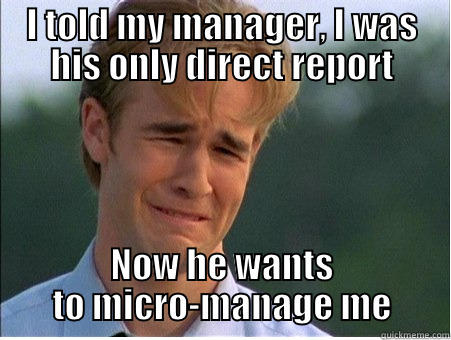|
What is an expert? Throughout my career the functional definition has been, someone I trust who knows more than me. Perhaps that is a fair definition for a mentor, someone who can help you see and reach beyond your current skills and abilities, but this likely isn't a sufficient definition for a subject matter expert. If you are interested in this topic, I think you will enjoy Episode 94 of The DYOJO Podcast as well as some of the quotes included in this blog post. An expert is a man who has made all the mistakes which can be made, in a narrow field. I think there is a humility factor in becoming someone whom others perceive to be an expert. I find that the things that I know well are those things that I learned by failing. It is comforting to know that there are others who view the world in this way as well. If you want to become an expert, the first step is to be willing to fail. The fear of failure is often more dangerous than failure itself. When we fail we can learn and try again. An expert is one who knows more and more about less and less. In order to excel in one area, do you have to prioritize your time and effort? I have heard that the difference between good and great is a small gap, but the difference between good, great, and elite is expansive. John Wooden coached UCLA basketball from 1948 to 1975, during that time his teams competed in a record 38 consecutive NCAA tournament games. Each offseason coach Wooden would study an aspect of the game to help keep himself sharp and hungry to improve. He said, "It's what you learn after you know it all that counts." Expertise is a combination of training, education, and experience. Aside from being a shameless plug to listen to my podcast so that you can hear these words from Bob's mustachioed lips yourself, there is great wisdom in his mantra. Mr. Blochinger has developed his career over many years of being a contractor, flooring installer, and now third-party consultant and expert witness, by applying the principles he shares. Bob has sought out training with practitioners, industry education and certification, and learning from his own experiences as well as that of others in his network. An expert is somebody who is more than 50 miles from home, has no responsibility for implementing the advice he gives, and shows slides. I can remember the first time a company I worked for hired an outside consultant to assist them in growing their business. If memory serves me correctly, I believe Edwin Meese's definition fit the representatives of that business consulting firm perfectly. As we discuss on my podcast, I think this is why the most helpful experts are those who have relevant experience in applying the principles that they are coaching their clients with. An expert is someone who has succeeded in making decisions and judgements simpler through knowing what to pay attention to and what to ignore. Another great mind, author and consultant Lex Sisney, shared a simple principle that has stuck with me. Whenever you are working to improve something, in yourself or your team, ask what must I STOP doing and what must I START doing to achieve the IDEAL. If we combine the concepts in this blog, the roadmap to expertise incudes filtering those things that are (even if only for the moment) distractions so that you can narrow your focus on what is important.
0 Comments
 How many direct reports is the most effective for a leader? How many direct reports is the most effective for a leader? Structure your team for success with the right view of span of control, interactions and direct reports. When an organization grows beyond the one-person operator delivering goods and/or services out of their garage, the process of building systems for success becomes essential to long term health. What works as a small company has to evolve as the company grows or the organization will outgrow the preceding systems. As an organization grows, adapts, changes and evolves, one question every leader and organizational system must answer is how many direct reports any given person in a position of leadership should have. At the end of the day this question has no right answer given that each organization is unique and each manager has a different threshold for efficacy. Let’s take a look at some of the metrics, discussions and insights related to the topic of finding the right number of direct reports. Gauging interactions (energy output) How do you measure efficacy when assessing the right number of direct reports? Business Insider took a peek at the number of reports of Tim Cook, the COO made CEO of Apple, who was believed to have upwards of 17 direct reports. Hal Gregersen, Ph.D., the executive director of the MIT Leadership Center states, “It's a question of how many people a leader can have a constructive conversation with when everyone is in the same room (Lebowitz, 2015).” Time is a limited resource that every manager only has so much of and trust is the greatest asset in developing employee engagement in an organization, the question is not how thin can a leader stretch themselves but how effective they can be in leading the members of their team whether directly or indirectly. Business journals and many persons in a position of leadership (PIAPOL) site Japanese management philosophy and regard 6-7 direct reports as the maximum number that a leader can effectively manage. In his own defense, Tim Cook emailed a response to Business Insider countering that, “"If you have smart people, a strong organizational culture, and a well-defined and articulated strategy that everyone understands, you can [have] numerous direct reports because your job isn't to tell people what to do.” Whether those analyzing a leader from within the organization or from the outside agree with the direction and decisions that they make, at the end of the day they will rise or fall based upon how they approach their leadership responsibilities. Measuring span of control So much of this discussion on the optimum number of direct reports is opinion based, one metric cited by Schaffer Consulting remarks that span of control is something which can be measured in this discussion, “When a manager goes from four to five subordinates, his potential interactions with them increase from 44 to 100 over a given period; and going from seven to eight subordinates raises the total interactions from 490 to 1,080 (Inc.).” This is a classic business concept that continues to be of relevance and value to organizations such as the United States Air Force in their goal of focusing missional clarity. Size of the organization obviously comes into play and the overall structure of a team must be crafted to support it’s necessary functions as well as it’s growth goals. As for the ethereal question "What is the right span of control for a manager," a consultant Jamie Flinchbaugh blogged, "Some factors to consider are: The narrower the span of control, the more coaching at the point of activity can be done; the broader the span of control, the more the entire process can be encompassed within fewer decision makers and more aligned decisions (The Build Network, 2014).” This is a simplified means of looking at the bigger picture, but a leader must analyze the position they are in with regards to the development of their organizational structure to determine where their immediate efforts are most valuable. Does the leader need to be directly involved in the training of key share holders in the building process or do they need to take a few steps back from the process to empower those on their leadership team to take ownership for their areas of responsibility. Avoiding top heavy management If the number of direct reports is too low, because the team has built multiple layers of upper and middle management to insulate those in positions of executive leadership there is a potential for disconnect. When an organization becomes slow and top heavy by way of structure, there are too many layers to weave through in order to accomplish anything in a timely or mission centered manner. As far back as 1989, Jack Welch, the CEO credited with turning GE around, was an advocate against the six direct report rule for many of these reasons. In an interview with Harvard Business Review, the management guru shared his candid thoughts on the matter, “We took out management layers. Remember the theory that a manager should have no more than 6 or 7 direct reports? I say the right number is closer to 10 or 15. This way you have no choice but to let people flex their muscles, let them grow and mature. The leader can focus only on the big important issues, not on minutiae (Tichy & Charan, 1989).” Systems should be built to support the people in the field who are making the products and/or delivering the services that make up the core functions of the organizations value interaction with the market. The question of the right number of direct reports is not a matter of ego nor strictly of science, but rather is a key discussion that will evolve with the needs of the organization in a manner that is unique to that team. Mike Myatt, Forbes contributor and chairman of N2 Growth, shares, “Where many leaders become disoriented is by confusing platform with people, and position with responsibility. Here’s the thing – it’s not about the platform, it’s about the people. Without the people there is no platform, and ultimately nothing to lead. It’s not about you (the leader), but what you can create and influence through those you lead (Myatt, 2012).” Rather than looking for the perfect number of direct reports, a leader should ask how many people they can effectively support to keep the vision and mission of the organization moving forward with relationship to the team’s values. Clarity. Consistency. Accountability. References: Lebowitz, S. (July 8, 2015) Apple CEO Tim Cook now has 17 direct reports – and that’s probably too many. Business Insider. Retrieved from http://www.businessinsider.com/apple-ceo-tim-cook-has-too-many-direct-reports-2015-7 The Build Network (April 3, 2014) Wait, how many reports direct reports did you say you have? Inc. Magazine. Retrieved from https://www.inc.com/the-build-network/direct-report-challenges.html Tichy,N., Charan, R. (October 1989) Speed, simplicity, self-confidence: An interview with Jack Welch. Harvard Business Review. Retrieved from https://hbr.org/1989/09/speed-simplicity-self-confidence-an-interview-with-jack-welch Myatt, M. (November 5, 2012) Span of control – 5 things every leader should know. Forbes. Retrieved from https://www.forbes.com/sites/mikemyatt/2012/11/05/span-of-control-5-things-every-leader-should-know/#7f921b0328c8  Door to door versus email... Door to door versus email... Originally published as Three Keys to Successfully Approaching New Clients Through Email, November, 22, 2016 in Restoration & Remediation Magazine (R&R). By Jon Isaacson All businesses need new clients, restoration most certainly included. Even the most basic research allows you to identify potentially valuable future customers, and draft a list of prospects. If the prospects are of as much value as anticipated, then the team must understand, appreciate and honor the etiquette of good business approaches and the gatekeeper to those clients. Paul Buccheit, the creator and lead developer of Gmail, expresses the sanctity of email, “Only my phone number and email are private because I don't want random people calling me. But I like the ability to share everything.” Who is the gatekeeper? In the modern economy the gatekeeper, or first line of defense, for clients of value is their email. Approaching a potential client through email can either be perceived as an invasion of privacy or a respectful approach that honors business boundaries, depending on how the content is composed. The drafting of an email will either allow admittance into the outer courtyard or expel you into the moat of oblivion. Thankfully, the keys to honoring the modern gatekeeper when approaching new clients are rather simple. 1) Subject Line "People often decide whether to open an email based on the subject line," business coach Barbara Pachter says. "Choose one that lets readers know you are addressing their concerns or business issues." (Smith, 2016) The subject line should be concise and answer the question whether there is value for the targeted client to open this email or pass this failed attempt at communication through to junk mail (the moat). Junk mail is the default setting for most email from unknown sources, as well as emails that are clearly a solicitation. So, if you are approaching people through email, you must recognize that email is the invitation, not the drawn-out conversation. Your subject line is the extending of your hand and your body language transmitted through however many characters you utilize in this important electronic transmission. An effective posture when composing a subject line will be respectful of time by providing a brief value proposition without being kitschy. The goal of the subject line introduction is to get the email opened. 2) First Paragraph “It’s better to say nothing than spend 1000 words or an hour speech saying nothing. Get to the point – fast.” Richard Branson If the email is opened, congratulations, the careful efforts have made it through the first line of defense and the relationship is past the initial cyber handshake in approaching a potential client. Any day that emails are not added to the hundreds of efforts banished to junk/block is a good day. If emails to prospects are introductions and the introduction is received, it is appropriate to follow up. Don’t ruin the good favor that the well thought subject line has created by now backing a dump truck of information upon the prospect. Remember the current advancement is only into the outer courtyard, not yet within the castle walls. Continue with the theme of the subject line and maintain respect for time, be brief and expound on the value proposition to the client, then ask for the opportunity to discuss further. This is the elevator pitch as the client has opened the outer gate but will discontinue the interaction just as quickly if there is an inability to connect. 3) Follow Up Director of Marketing for The Muse, Elliot Bell encourages, “Remember: If someone does ask you to stop following up, stop following up. But until you hear that, it’s your responsibility to keep trying.” Research, care and respect have advanced the efforts to this point and now it’s time for appropriate follow up with respect to the correct etiquette. This email is meant to ensure the client received the original email and determine whether they would like to discuss the content further. A follow up call or email should be brief and respectful, with a personalized addendum to the value proposition from prior email. When a call is made, there is an inherent request to venture further into personal space as well as asking for additional time, so the same principles applied in previous stages are as essential. The purpose of follow up is to answer for both parties whether there is value in moving forward with this potential business interaction. All clients have value and in the modern economy email serves as a gatekeeper when approaching prospects. Being brief, concise and respectful when composing a value proposition will enable greater success in introducing oneself through email. As noted in a previous article entitled Marketing Step One, good business practitioners are always looking to create opportunities to show potential clients how their organization can serve specific needs. Each step in the process of meeting new clients is about breaking down barriers rather than storming the gates in one fell swoop. All individuals are unique so it is important to listen through the process and learn from successful as well as unsuccessful approaches to new clients. For a personal example of how the author was able to initiate and build a networking resource for local clients in an underserved market, read How To Network With Local Facility Management Peers posted on FacilityExecutive.com. Many of the invitations that lead to ongoing business relationships that built Local Facilities Manager’s Connection (LFMC) were initiated through emails using the principles outlined in the source article above. References: Smith, Jacquelyn (2016, February 1) 15 email-etiquette rules every professional should know.Business Insider. Retrieved from http://www.businessinsider.com/email-etiquette-rules-every-professional-needs-to-know-2016-1/#1-include-a-clear-direct-subject-line-1 Bell, Elliot. Pleasantly persistent: 5 rules for effectively following up.The Muse. Retrieved from https://www.themuse.com/advice/pleasantly-persistent-5-rules-for-effectively-following-up |
AuthorThoughts on personal and professional development. Jon Isaacson, The Intentional Restorer, is a contractor, author, and host of The DYOJO Podcast. The goal of The DYOJO is to help growth-minded restoration professionals shorten their DANG learning curve for personal and professional development. You can watch The DYOJO Podcast on YouTube on Thursdays or listen on your favorite podcast platform.
Archives
March 2023
Categories
All
<script type="text/javascript" src="//downloads.mailchimp.com/js/signup-forms/popup/unique-methods/embed.js" data-dojo-config="usePlainJson: true, isDebug: false"></script><script type="text/javascript">window.dojoRequire(["mojo/signup-forms/Loader"], function(L) { L.start({"baseUrl":"mc.us5.list-manage.com","uuid":"b9016446bd3c6a9f0bd835d4e","lid":"83282ffb9e","uniqueMethods":true}) })</script>
|
Jon Isaacson |
Connect. Collaborate. Conquer.
© COPYRIGHT 2015. ALL RIGHTS RESERVED.
|



 RSS Feed
RSS Feed